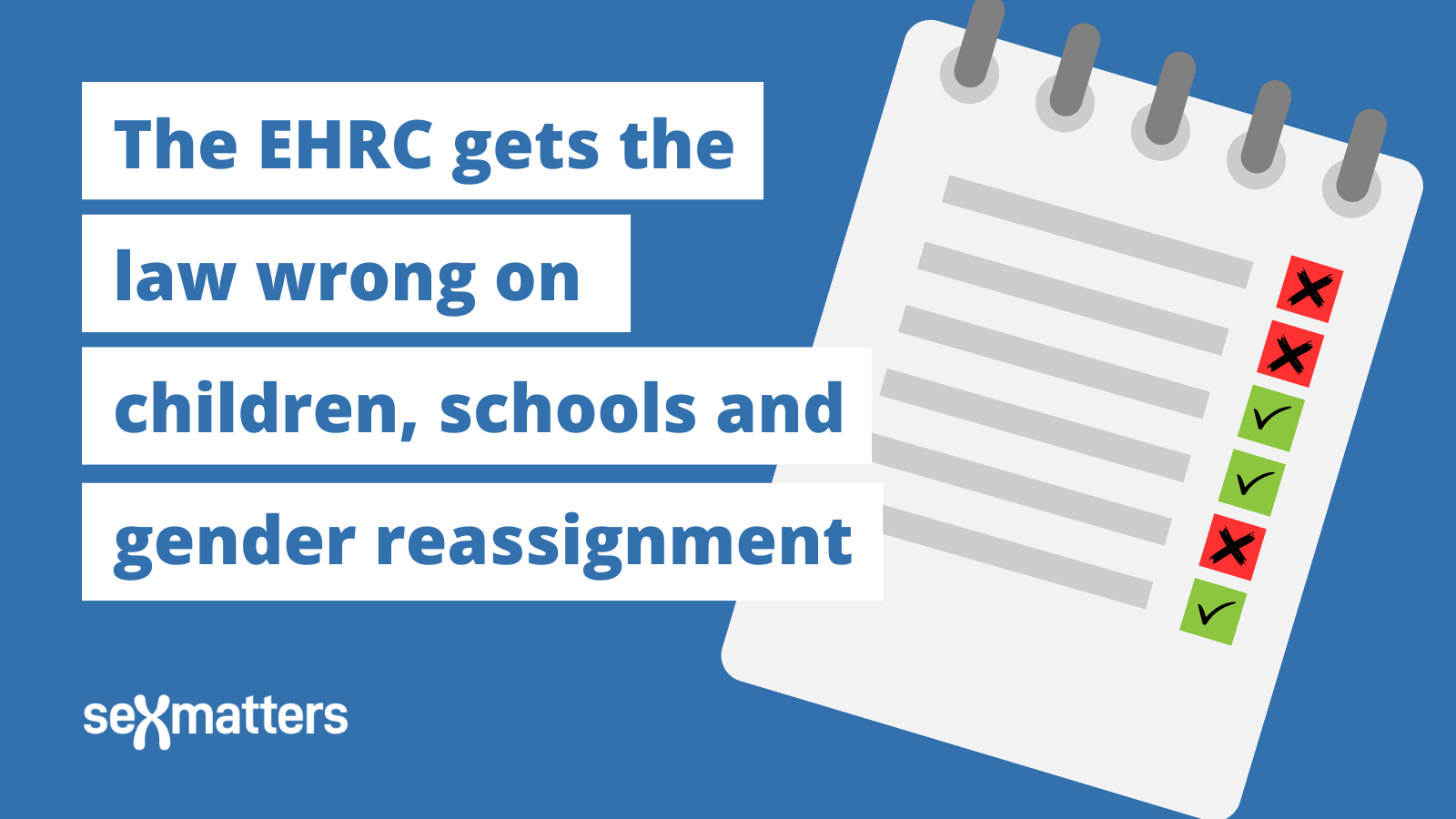Has the EHRC forgotten about children and safeguarding?

The Equality and Human Rights Commission has published its response to the Department for Education’s draft guidance for schools in England on gender-questioning children. It says that DfE’s approach “is compatible with equality and human rights law”, but calls for a clearer explanation of the legal concepts underpinning it.
We agree that the DfE guidance is helpful and that it should be strengthened with a clear explanation of the law. We recommend that the DfE publish a model policy for schools backed by legal analysis.
But the EHRC in its response gets the law wrong. As it is the nation’s equality watchdog, this is very concerning. We have published a detailed analysis:
Safeguarding comes first
The EHRC goes wrong by losing sight of the primary responsibility of school leaders, which is to keep children safe and to educate them. It becomes too focused on the legal possibility of indirect discrimination based on the protected characteristic of “gender reassignment” and forgets about the direct discrimination that would be involved in exempting children from the rules and policies designed to safeguard them.
The basic principles in relation to the protected characteristics of sex and gender reassignment and schools are:
- Mixed schools have sex-based rules and policies (that is, where girls and boys are treated differently) only where the rules are justified, most often for reasons of safeguarding, safety, dignity or fairness. Exempting a child from safeguards because they declare themselves to be transgender would be direct discrimination.
- Single-sex schools are expressly allowed by the Equality Act. There is no need to further justify why an individual child of the opposite sex will not be admitted.
- A boy who may have the protected characteristic of gender reassignment should not be excluded from provisions or facilities for boys.
- A girl who may have the protected characteristic of gender reassignment should not be excluded from provisions or facilities for girls.
- A child who may have the protected characteristic of gender reassignment should not be treated differently with regard to safeguarding and risk. This requires that nobody is made confused about their sex.
Our analysis covers each of the areas where these principles apply (including sports, toilets and changing rooms, uniform) but here we focus on pronouns, which is where confusion often sets in.
Pronouns
Personal pronouns (he/ she) are words that relate to a person’s sex. There are no laws about pronouns, but as part of their job of keeping children safe, and enforcing clear behaviour policies schools need to know and refer to children’s sex routinely and accurately. Using the wrong sex pronoun for a child – calling a girl “he” or a boy “she” – is likely to confuse people about that child’s sex and the rules that apply to them. There is no human right that requires a school to keep a child’s sex private in school.
In 2019 the EHRC published draft guidelines for schools that said:
“If a pupil has legally changed their name, then the school must use the pupil’s new name and relevant pronoun.”
This guidance was never completed; many organisations raised objections to it and the draft was withdrawn.
In 2023 the EHRC reviewed its general guidance for schools on the Equality Act published in 2014. This included a section that said of a female pupil wishing to “live as a boy”:
“Not referring to this pupil as a boy would also result in direct gender reassignment discrimination.”
It is not “direct gender reassignment discrimination” not to refer to a girl as a boy, and EHRC removed that section. Baroness Kishwer Falkner, chair of the EHRC, said: “We have now revised some areas to ensure the guidance is legally correct.”
However, in its response to the DfE consultation published last week, the EHRC again suggests that a school might agree to refer to a boy with language that relates to girls, and vice versa (indeed it suggests that it should be as routine as a change of name):
“Once a decision has been taken to recognise a change of name or pronouns it should be implemented consistently within the school… our recommended approach regarding requests to change a child’s pronouns is similar to that in respect of name changes.”
Any child can change their name. But a boy cannot change into a girl or a girl into a boy. “Changing a child’s pronouns” is a euphemism for using language that suggests the child is no longer a boy or a girl, and should be treated as being the opposite sex, or neither. This is not compatible with referring to a child’s sex accurately.
The policy of referring accurately to each child’s sex is justified by the need for everyone in school to understand the rules that apply to them in order to keep all the children safe and treat them fairly. These are rules that both DfE and the EHRC agree are lawful and justified.
For a policy to be indirect discrimination there must be a detriment. Children often have to be refused things that they want, in their own best interests. This is why schools have rules and behaviour policies. Refusing to indulge a child’s wish for something that would undermine their safety is not a detriment.
The EHRC should recall this response to the guidance and reconsider it.
As Sex Matters wrote to the EHRC in November 2023, there is a critical gap in the EHRC’s governance manual: it does not mention safeguarding or include a process for due diligence on safeguarding in its recommendations and guidance. If the EHRC had a safeguarding due-diligence policy it would have assessed this recommendation against it and recognised that they were not compatible.
The EHRC should have a published safeguarding policy, and a process for assessing the safeguarding implications of the guidance and recommendations it produces.
